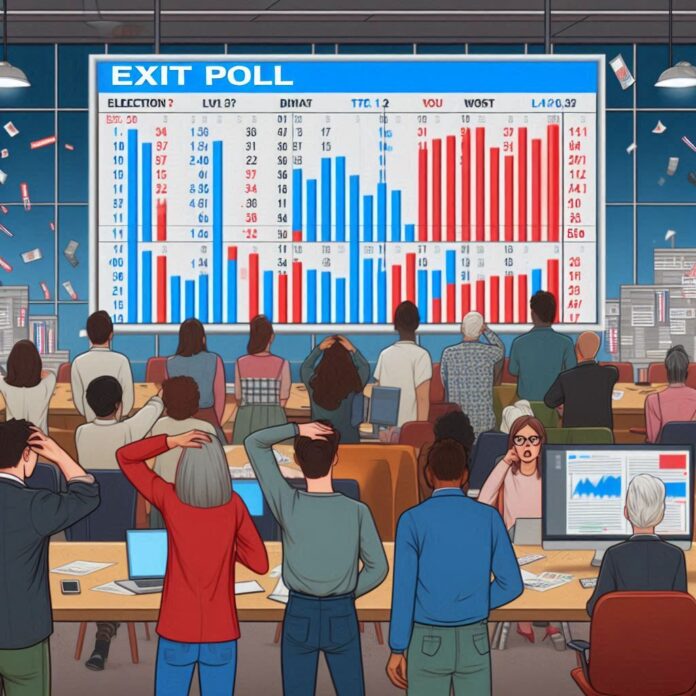In the last six to eight years, my media consumption habits have changed drastically.
Just as I have drastically reduced the consumption of empty calories and ultra-processed junk food, my consumption of news and analysis on mainstream Indian media—especially television—has been reduced to the bare minimum.
As with many of our democratic institutions, the mainstream Indian media— big newspapers and TV stations which we trusted blindly— have almost become completely unreliable and untrustworthy. They seem to have been compromised through coercion by an authoritarian government.
Can India afford an autocratic leader at the helm?
Therefore, after scanning and skimming the headlines in about a dozen news channels and newspapers daily, I switch to alternate news sources on YouTube and watch, follow and subscribe to many of the channels there. Many of these channels are run by individual journalists and have a high following. News and analysis is presented boldly and fearlessly enriching our understanding of current affairs.
Thus, in the aftermath of the 2024 General Elections, with the last polling on 1st June, there was no question of wasting time in watching, listening to or reading the Exit Polls broadcast, telecast and printed by media houses.
Enter the Exit Polls
For two days in a row, starting on the evening of 1st June, prominent Exit Polls (such as ABC News-CVoter; India Today-Axis My India; News24-Today’s Chanakya; TimesNow-ETG; IndiaTV-CNX, RepublicTV-P-Marq; Jan Ki Baat; INDIA NEWS – D Dynamis; and NDTV Poll of Polls) predicted 305-315 seats for the BJP , well above the 303 seats it had secured in the 2019 elections. The BJP-led alliance, NDA, was projected to secure 350-400+ seats in Lok Sabha, the lower house of Parliament with 543 members.
The 8-column Exit Poll headlines screamed: ‘Even better than 2019 for Modi’; ”Exit polls forecast resounding return of BJP-led NDA with gains across South, Bengal and Odisha’; ‘Modi set for another big victory’; and ”Exit Polls, Enter Bulls: It’s a party on Dalal Street’.
Political activist and former psephologist Yogendra Yadav and Parakala Prabhakar (political economist, social commentator and husband of union finance minister Nirmala Sitaraman) were the only two political analysts to assert that the BJP won’t get a majority and the NDA could well be in trouble.
Counting began on the morning of the 4th; the trends were clear by early afternoon and the picture was clear by evening:
- The BJP, which had targeted 400+ seats for its NDA alliance and was expecting a thumping majority with 300+ seats for itself in the lower house of Parliament of 543 members, secured 240 seats, registering a loss of 63 over its 2019 performance.
- Its alliance NDA (National Democratic Alliance) secured 291 seats which was far less than the projected 400+
- The main opposition, Congress, secured 99 seats with a gain of 47 seats over its 2019 performance. The opposition alliance, I.N.D.I.A. secured 234 seats.
Coalition Karma
In sharp contrast to the Exit Poll headlines, the headlines in the morning papers announcing the results encapsulated the story of the day: ‘Coalition Karma’; ‘LS (Lok Sabha) Constitution Has Changed’; ‘Short of Majority, Modi has to rely on Ambitious Allies’; ‘Modi 3.0: Coalition Returns’; ‘India gives NDA third term, Modi a message’; ‘India Cuts Modi Down’; and, ‘Bulls caught on the wrong foot, stocks sink in sea of red’.
The Indian general elections are the world’s largest democratic exercise with 968 million registered voters of which 642 million (including 312 million women) exercised their franchise.
The results were indeed tectonic because of multiple reasons: the denial of a majority to the BJP; the defeat of key candidates of the ruling BJP such as Union ministers Smriti Irani and Rajeev Chandrashekhar; the embarrassingly poor performance of the BJP in India’s largest state, Uttar Pradesh—the epicentre of the Ram Mandir movement, and a confident performance by a reinvigorated Congress under its former president Rahul Gandhi.
Exit Polls in Mexican Elections
The results mark a significant watershed because of the re-emergence of coalition politics and the noteworthy performance of regional parties notably, Chandrababu Naidu’s Telgu Desam Party (TDP) and Nitish Kumar’s Janata Dal (United) whose support will be critical for the third term government formation under Prime Minister Narendra Modi. Other regional parties which did well in this election include the Samajwadi Party (UP), Shiv Sena (UBT) and Nationalist Congress Party (Sharad Pawar) in Maharashtra; Mamata Banerjee’s Trinamool Congress (TMC) in West Bengal, and MK Stalin’s DMK in Tamil Nadu.
The message of the Indian electorate to Prime Minister Modi is crystal clear: become more inclusive, respect Indian secularism; do not talk of changing the constitution, respect cooperative federalism and focus on jobs creation and development.


